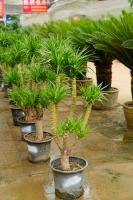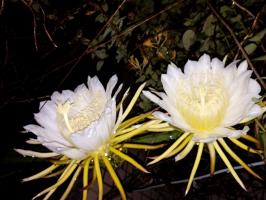How Water Power Plant Works
Water power plants, also known as hydroelectric power plants, generate electricity using the kinetic energy from falling or flowing water. These plants account for roughly 7% of the world's total energy supply, making them a crucial source of renewable energy. In this article, we will discuss how water power plants work and their advantages and drawbacks.
Power Generation Process
The power generation process in a water power plant follows a basic principle: the motion of falling water is used to turn turbines, which turn generators that produce electricity. The key steps in the process are:
Water is stored in a reservoir behind a dam, which creates a height difference known as head pressure.
The water is then allowed to flow through a penstock, which is a pipe that leads to the turbine. As the water flows, it exerts pressure on the turbine blades, causing them to spin.
The spinning turbine shaft is connected to a generator, which converts the rotational energy into electricity.
The electricity is then fed into a transformer to increase the voltage for transmission to the grid.
The amount of electricity generated depends on factors such as head pressure, flow rate, and the efficiency of the turbine and generator. More head pressure, higher flow rates, and better equipment result in greater electricity production.
Advantages of Water Power Plants
There are several advantages to using water power plants to generate electricity:
Renewability - Water is a renewable resource that is widely available, as long as there is rainfall and snowmelt.
Reliability - Water power plants can run continuously as long as there is a consistent source of water. This makes them highly reliable and suitable for meeting the base load demand for electricity.
Low emissions - Water power plants do not produce any greenhouse gases or other harmful emissions, making them a clean source of energy.
Flood control - Dams used for water power plants can also be used for flood control, preventing or minimizing damage from floods.
Drawbacks of Water Power Plants
Despite their advantages, water power plants also have some limitations and drawbacks:
High capital costs - Building a water power plant requires a significant investment in infrastructure such as dams, reservoirs, and turbines. This makes water power plants more expensive to build than some other renewable energy sources.
Environmental impact - The construction of dams and reservoirs can have negative impacts on local ecosystems and wildlife habitats. Additionally, altering water flow patterns can affect downstream areas and aquatic life.
Dependence on water supply - Water power plants rely on a consistent water supply, which can be affected by droughts or other weather events. This can lead to reduced electricity production during times of low water availability.
Conclusion
Water power plants are a crucial source of renewable energy, providing clean electricity with few emissions. While they have some drawbacks such as high capital costs and environmental impacts, their reliability and renewability make them a valuable energy source that will continue to play an important role in meeting global energy demand.

 how many times do yo...
how many times do yo... how many planted tre...
how many planted tre... how many pine trees ...
how many pine trees ... how many pecan trees...
how many pecan trees... how many plants comp...
how many plants comp... how many plants can ...
how many plants can ... how many plants and ...
how many plants and ... how many pepper plan...
how many pepper plan...































